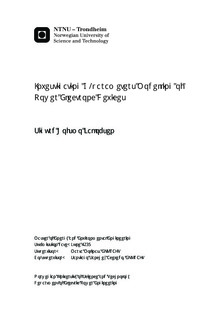Investigating G-parameters Modelling of Power Electronc Devices
Master thesis
Permanent lenke
http://hdl.handle.net/11250/257602Utgivelsesdato
2013Metadata
Vis full innførselSamlinger
- Institutt for elkraftteknikk [2465]
Sammendrag
In a world with an ever increasing population, the demand for energy is constantly on the rise. Most countries also agree, that a sustainable development should be ensured. To accomplish this, a higher penetration of renewables in the present energy system is needed. Unlike traditional power production like thermal and hydro power plants, many of the renewable energy production units can not produce electricity at the desired frequency without power electronic devices. HVDC grids have also been suggested, as a mean to electrically connect geographically distant areas, to reduce the problem of local weather systems influencing the output of many renewable sources. It should thus be quite evident, that good models of power electronic devices are needed, to analyse the system's behaviour, and in particular its stability. In this report a black-box measurement based modelling technique will be investigated, with its biggest advantage being, that no a priori knowledge of the device under investigation is needed. The thesis starts off with an introduction to the relevant theory, and an introduction to the methodology. In the theory part a suggestion for a new equation set to calculate the model and a stability criterion for the model is presented. The new equation set for calculating the model is also proven to be equivalent with the old one. In the rest of the thesis the focus is on developing a test bench for obtaining the model. Following a step by step approach, starting with simulations on a VSI developed in Simulink, to get acquainted with the methodology. Before a test bench was developed for testing the methodology on dc-dc converters, ultimately leading to tests conducted on a physical VSI.
